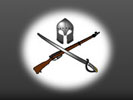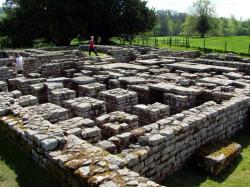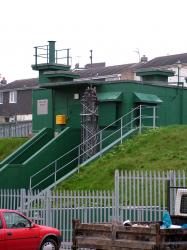Translate this Page
Recent reviews :
- The Men of Wellington's Light Division (Gareth Glover and Robert Burnham)
- Blood, Guts and Gore. (John Gordon Smith )
- Armoured Warfare in the British Army 1939-1945 (Dick Taylor)
- Battle Understanding Conflict Hastings to Helmand (Graeme Callister & Rachael Whitbread)
- Eyewitness at Dieppe (Ross Reyburn)
- Echoes From Dawn Skies - Early Aviators: A Lost Manuscript Rediscovered (Frederick Warren Merriam)
- The Decline of Empires in South Asia (Heather A Campbell)
- The Final Curtain Burma 1941-1945 (Jeremy Archer)
- The Harwich Striking Force (Steve R Dunn)
- Churchill's Arctic Convoys (William Smith)
Book reviews for - Late Medieval and Renaissance
-
Elizabeth's Sea Dogs and their War against Spain
Brian Best
In Brian Best’s book we have all that the title promises. Taking only 185 pages to cover such a rich history it is necessarily a potted account of all the major figures and events. That said we have a really good cover to cover read which doesn’t leave one feeling short changed although it does arouse interest enough to want to explore particular aspects further. Every reader will get something from this book which provokes interest; for me it was the chapter on Military Elizabethans, the men who fought on land and sea.
The text is complemented with some appropriate illustrations and a brief bibliography.
We commend this book as one to settle down with and enjoy.
Frontline Books, 2021
-
The Castle in the Wars of the Roses
Dan Spencer
Forget for a moment the focus on castles and here we have a good overview of the whole of the thirty years Wars of the Roses. Now add in the focus on castles, an oft neglected element in the strife, and you have a very good book. Of course there is a great deal about the military aspects of castle control but ,as this book explains, there was so much more to ‘The Castle’. Not least was the prestige of owning or being in charge of a castle as this was most probably given by royal patronage. Naturally, given a change of king, new people were given the spoils which included the castle and all that went with it. The post Conquest notion of regional power base continued to hold sway both as military and civil realms and area control meant income. Disputes occurred often hiding personal enmities within the context of a civil war even to the extent of fuelling the conflict.
One thing which has always intrigued me which is reinforced by the information in this book is the tiny size of the garrison in many very large castles. For example huge Caernarfon had about twenty men, Carisbrooke had ten men-at-arms and ten archers, and Harlech about twenty four men for most of the period.
In addition to the general text there is a set of rather good photographs and four maps but, unfortunately do not have a scale on any of them. Only a selection of the castles mentioned in the text are on the maps and it would have been interesting to have a map showing every castle almost as a density and distribution diagram. The concluding chapter and the three appendices, people, sieges, and garrisons are superb. An extensive bibliography rounds off the book.
In summary thoroughly researched and well written. We highly recommend this well-known story brought to life in a most readable form with a new twist.
Pen & Sword Military, 2020
-
Lepanto 1571
Nic Fields
Here it is all you need to know about Lepanto and much more. This is Lepanto in the round set within its context which is the sixteenth century almost everything which has a bearing on the battle is herein. For instances included are a brief history of the Knights Hospitallers, the development of the galley, Janissaries, the confusion around the naming of big guns and the power politics of all participants. The footnotes alone make fascinating reading and also refer out to more information on most of the topics discussed in the book. The bibliography covers eleven pages in fairly small typeface. There are a few illustrations and maps.
The author, Nic Fields, does not ‘talk down’ to the reader but, while not being a dry academic tone, leaves one aware of the considerable scholarship which has gone into the writing.
This is a book to get immersed in and we highly recommend it to everyone with any interest in the sixteenth century generally and the development of naval warfare in particular.
Pen & Sword Maritime, 2020
-
Agincourt 1415
Battlefield History TV Team
This DVD, 1 hour 40 minutes long, is about the whole campaign of 1415. There is good coverage in both the political and military domains of the preparations, execution, and of some of the consequences. The siege of Harfleur and its affects on the expedition are particularly well handled. The unfolding of the battle of Agincourt has all the elements one would expect, clearly describing how the French ‘snatched defeat from the jaws of victory’.
Verbal explanations, given by people who clearly know their subject, are mostly presented before a background of the sites as they are today. There are maps, and film of re-enactors from the Medieval Combat Society playing out some aspects of fifteenth century combat, especially arrows against armour, which really bring the story to life.
We recommend this DVD as being both informative and entertaining.
Pen & Sword Digital, 2013
-
Crescent and Cross
Bicheno. Hugh
A superb book covering the Religio-political background to the Battle of Lepanto, through the battle to the consequences. Along the way Bicheno explodes many mis-conceptions about the battle as well as giving insights into the present factional warfare in former Yugoslavia. He conveys a real understanding of 16th Century warfare both the glamour and the gore.
Phoenix, 2004
-
Sekigahara 1600
Bryant, Anthony
Some good maps, diagrams, and pictures with lots of information on this important battle in Japan which saw Tokugawa Ieyasu become Shogun.
Osprey, 1995
-
Towton 1461, England's bloodiest battle
Gravett, Christopher
Osprey, 2003






